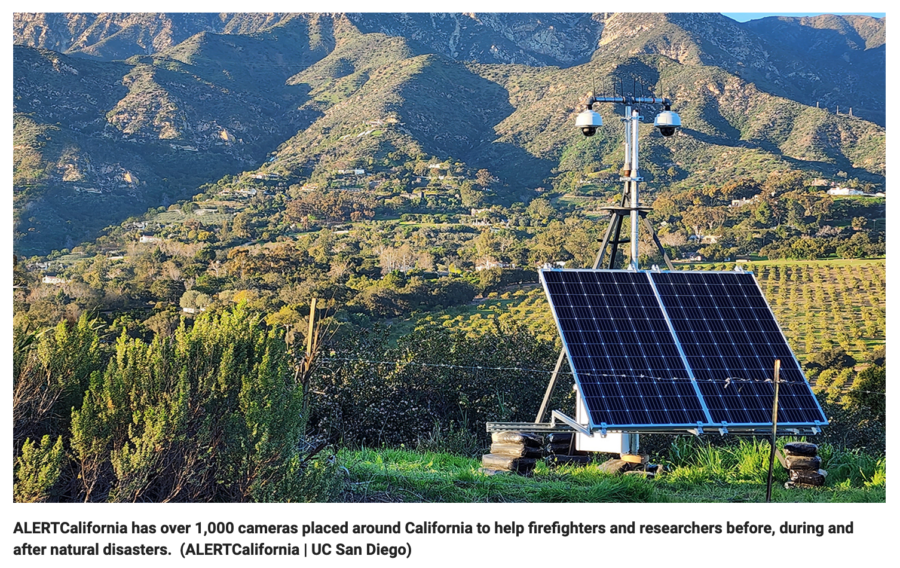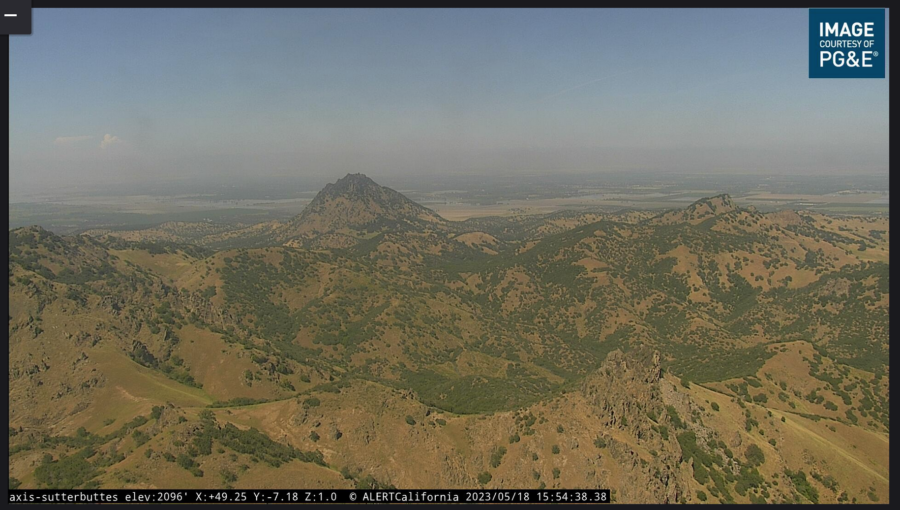Cal Fire and other agencies are using a network of over 1,000 cameras across California to track wildfires — and now the public can access the network, too. FOX News reports that the University of California San Diego and state fire agencies have partnered to launch a public website for people to view live camera feeds from across the state.

ALERTCalifornia uses a network of more than 1,000 live cameras to track fires. “We’re trying to understand the impacts, the cascading disasters after these events,” said Dr. Neal Driscoll, a professor of geology and geophysics at the UC San Diego Scripps Institution of Oceanography in La Jolla, California. “I’m a professor. I study earthquakes, I make sensors, and here these sensors lend themselves to other events, such as atmospheric rivers and wildfires.”
View live feeds here: cameras.alertcalifornia.org
As the ALERTCalifornia camera network grows in size and sophistication, UC San Diego researchers are using new technology to study natural disaster patterns in the West. ALERTCalifornia provides state-of-the-art technology supporting data-driven decisions to prepare for, respond to, and recover from natural disasters. Based at the University of California San Diego, ALERTCalifornia is a public safety program focused on fires and other natural disasters featuring a world-class camera network.

“These cameras are on mountaintops that we can access, and so if we get a 911 call from someone reporting smoke, we can — one click away — just get on the computer and see if there is actually any smoke in the area,” said Capt. Brent Pascua, PIO with Cal Fire. “We can use multiple cameras to pinpoint the location and get a better location as well.”
“Five or six years ago they had to send a battalion out or an aircraft to confirm ignition,” says Driscoll. “Now they can turn to our cameras. They can immediately move the camera, and image that area, and confirm ignition.” The high-definition cameras can pan, tilt and zoom, with a view as far as 60 miles on a clear day and 120 miles on a clear night, according to Scripps Institution of Oceanography. New cameras were recently installed in Los Angeles, Santa Barbara, and Madera counties since the new year.

Only fire agencies can control the movement of the cameras, which are placed on tripod platforms that can be removed seasonally with little to no impact on sensitive habitats or tribal lands. The camera network started 20+ years ago in 2000, with numerous improvements to the technology over time. The network was originally created to study earthquakes. Since then, it’s expanded to monitor fires and other natural disasters. Public access to the camera feed was launched last week.
